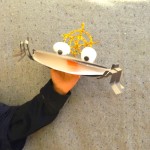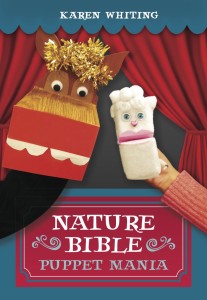Puppets and Children
Puppets edutain children. They can educate while delighting children. Simple puppets of heads on a Popsicle stick to the carved ones on television shows all bring inanimate objects to life and their movements can grab a child’s interest.
Paper plate puppets
 Fold a paper plate in half. Cut a second one in half and glue outer edges to the folded one to make a place to slip in fingers.
Fold a paper plate in half. Cut a second one in half and glue outer edges to the folded one to make a place to slip in fingers.
Color and decorate it. Add two pompoms to make for eyes that stand out, or fold pieces of paper and glue folded edge to the plate. Add something related to the puppet’s character, like a spider web for hair for a spider. You’ve got a puppet!
Box puppets
Use two boxes or one cut along three sides (halfway down) and folded to create the mouth and head. Cover it with contact paper, cloth, or wrapping paper and add features. You made another puppet!
Movements
Use your thumb to lower and lift the puppet’s jaw to talk and practice lip syncing words. Let the puppet talk to children. Practice movements like having the puppet dance, turn, sneeze, and look at a child. That helps bring the puppet to life.
Engage children with puppets
Let a puppet share about rules, facts, and tell jokes. A puppet can sympathize with a child, act out a situation, and introduce tough topics in a non-threatening way. A puppet can become a friend with whom a child shares thoughts and feelings. A puppet can also help a child learn facts or review material for a test. A puppet can give silly answers for the child to correct and laugh at mistakes to help a child overcome fears or problems with learning. They can also pray with a child, share reasons they are thankful, and talk to children about faith. The possibilities are limitless.
For more, check out my new book, Nature Bible Puppet Mania.
Have fun!
Karen Whiting, former TV host of Puppets on Parade


Comments
Puppets and Children — No Comments
HTML tags allowed in your comment: <a href="" title=""> <abbr title=""> <acronym title=""> <b> <blockquote cite=""> <cite> <code> <del datetime=""> <em> <i> <q cite=""> <s> <strike> <strong>